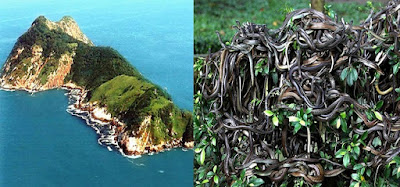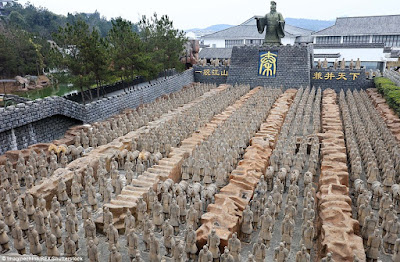Pamukkale (Cotton castle)
C via Flickr
Pamukkale is one of Turkey’s
greatest natural and historical treasures. And if you love
geological phenomenons, green travel to this miracle of nature is sure to
blow you away. Here are some Pamukkale ecotourist facts you should know before
you go-
The Cotton Castle
Aptly named the Cotton Castle, this
surreal landscape made up of mineral forests, petrified waterfalls and a series
of terraced basins was created by calcite-laden waters
derived from seventeen hot springs. The dazzling white travertines of hard
calcium deposits resemble a mountain of snow from a distance. These
travertine terraces form pools of hot water that cascade over
the cliffs.
Ancient Spa Town
Pamukkale has been a spa since
the Romans built the spa city of Hierapolis around a sacred warm-water spring.
The Antique Pool is still there, littered with marble columns from the
Roman Temple of Apollo and you can swim in it as the Romans once did.
Marvel of Minerals
The mineral-rich Pamukkale hot
spring waters are high in calcium, magnesium sulfate and bicarbonate. Water
temperature is 36 to 38 degrees Celsius with a pH of 6. and a total mineral
content of 2,430 mg/lt.
The water is said to help recovery
from high blood pressure, kidney stones, stroke, rheumatism, nervous and
physical exhaustion, eye and skin diseases, circulatory problems, digestive
maladies, nutritional disorders and chronic disorders.
Historical City
First founded by King Eumenes II of
Pergamon soon after 190 BC, Hierapolis was originally a fortified military
colony. But the city enjoyed its greatest prosperity during the 2nd and
3rd century when, with its natural hot springs, it became an popular spa
centre.
The ruins of a grand colonnaded
street are parallel to the travertines for just over 1 km, extending between
the necropolis to the north and a Byzantine church at the southern end. From
the church, you come to the Temple of Apollo and its famed Hell’s
Gate or Plutonium – a cave beneath the temple that was a source
of poisonous gas.
On a slope above the rest of the
Hierapolis ruins is the mighty theatre with its facade over 100 meters long and
incorporating two tiers of seating, each with 26 rows. Built during the reigns
of the Roman Emperors Hadrian and Septimus Severus, the theatre is incredibly
well preserved, retaining much of its original detail with the imperial VIP
boxes, and some decorative panels along the stage still surviving.
Sacred Pool
If you want to partake in some hot
pool soaking just like the Romans did, then look no further. Pamukkale’s
Antique Pool (beside the Temple of Apollo) allows you to soothe
those travel weary muscles in mineral-rich hot spring waters that are a
steady 36 degrees Celsius. With half-submerged columns and chunks of fallen
marble scattered around you in the water, this could be the most
time-traveling and surreal spa experience you’ll ever have, .
Protected World Heritage Site
Pamukkale and Hierapolis were
jointly declared a UNESCO World Heritage Site in 1988. To protect and preserve
this magnificent ancient treasure, hotel buildings and structures around
the thermal pool were demolished, and entry of private vehicles into the site
forbidden. Visitor access to the travertine terraces
has been limited to sustain the water flow and maintain the
colour and structure of the travertine terraces. Areas where visitors can bathe
in the hot springs are clearly demarcated.




Comments
Post a Comment
Your suggestions